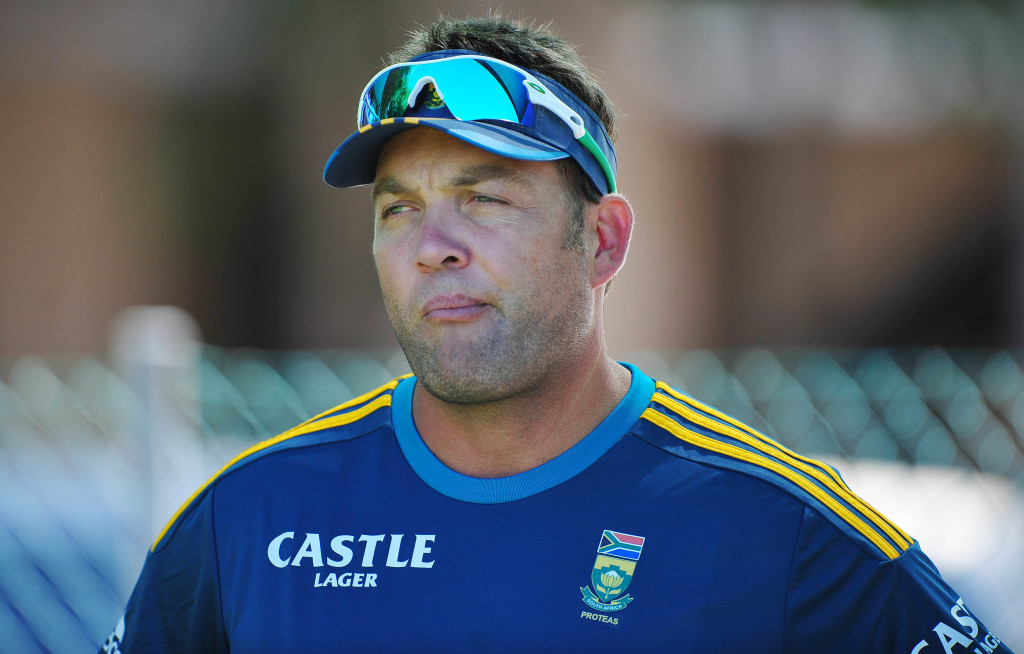While South Africa have ticked some boxes in the top- and middle-order, a genuine all-rounder remains elusive.
In years to come, the history books will remind us that the Proteas hammered England by 280 runs in the fourth Test of the 2015/16 series. They will acknowledge the achievement of a 20-year-old Kagiso Rabada, who took four important wickets on the morning of day five to spark an England collapse. Indeed, that match may be remembered as the one in which Rabada claimed 13-144, the best match figures by a South African on home soil.
To say that 26 January 2016 witnessed the birth of a new Test star is fair. To say it witnessed the redemption of a once great South African side is a stretch.
The Proteas, thanks in no small part to Rabada, have arrested their slide into mediocrity. After 12 months without a win in the five-day format, they have tasted success. After nine straight disappointments, they have a reason to smile.
Not too broadly, mind you. The streak without a series win will continue.
South Africa drew a rain-affected series in Bangladesh last July. They lost 3-0 to India this past December, and then 2-1 to England in the recent series at home. A lot still needs to happen before they can begin a new assault on the ICC’s No 1 ranking.
There have been some positives to emerge from the recent series, but before we delve into those, let’s reflect on how the coaches and selectors spent the better part of 12 months working towards some conclusions that were obvious from the outset.
Graeme Smith retired in March 2014, while Alviro Petersen called it quits 10 months later. The selectors needed to respond by backing someone solid in that opening position. Instead of favouring a specialist, however, they tried to turn a middle-order batsman into an opener.
Stiaan van Zyl was backed for the position in Bangladesh, in India, and again in the series against England. Finally, the brains trust realised that Van Zyl was a bad fit, and that his struggles were compromising the rest of the batting order and ultimately the team totals.
They inserted Stephen Cook for the fourth Test, and there was an immediate change in approach and results. Cook offered stability. He scored 115 in the first innings and, together with Hashim Amla, set the team up for a big score of 475. That had a massive bearing on the flow of the game.
So many have defended the use of AB de Villiers as a wicketkeeper over the years despite his chronic back condition. It was only after De Villiers complained about his workload and hinted that he might walk away from Test cricket that the selectors relented. Sanity has prevailed, and it appears as if the 23-year-old Quinton de Kock will be backed for an extended period.
The batting lineup that featured at Centurion was well balanced. That said, the side as a whole was not.
It was a gamble to include three seamers and one specialist spinner. Those selections so nearly cost the Proteas when Kyle Abbott pulled up with a hamstring injury and the seamer contingent was effectively reduced to two.
One wonders what may have happened if Rabada, and to a lesser extent Morné Morkel, did not destroy England in the space of 65 minutes on the morning of day five. If England survived to draw the game, the selectors’ folly would have been exposed.
The Proteas cannot afford to make the same mistake again. If they are serious about regaining the Test crown, they need to settle on a side that can both score runs and take 20 wickets.
The problem, and it remains a big one, is that the Proteas are no longer in possession of an all-rounder of even moderate ability. And until they find one, they may have to shorten their batting lineup and place more faith in those players.
Going forward, the coaches and selectors need to rethink the split between batsmen and bowlers. Until they find a real all-rounder who can do what Jacques Kallis did for the Proteas, and what Ben Stokes did recently for England, they may have to back six batsmen (including a ‘keeper) and five bowlers.
The alternative is to back seven batsmen (including a keeper) and four bowlers. In that scenario, however, it would be a risk to field only three seamers and a spinner (as seen at Centurion). And so you might find that four seamers are selected and a specialist spinner misses out more often than not.
That would be a shame, as Dane Piedt has shown great promise in his five Tests. If he continues to receive opportunities to play and develop, he could be an asset in future.
The Proteas struggled to strike the right balance in a period that witnessed five losses, four draws, and one win. The recent backing of Cook and De Kock has helped them on the batting front, but they may never get it completely right until they find someone who can double as a batsman and bowler.







